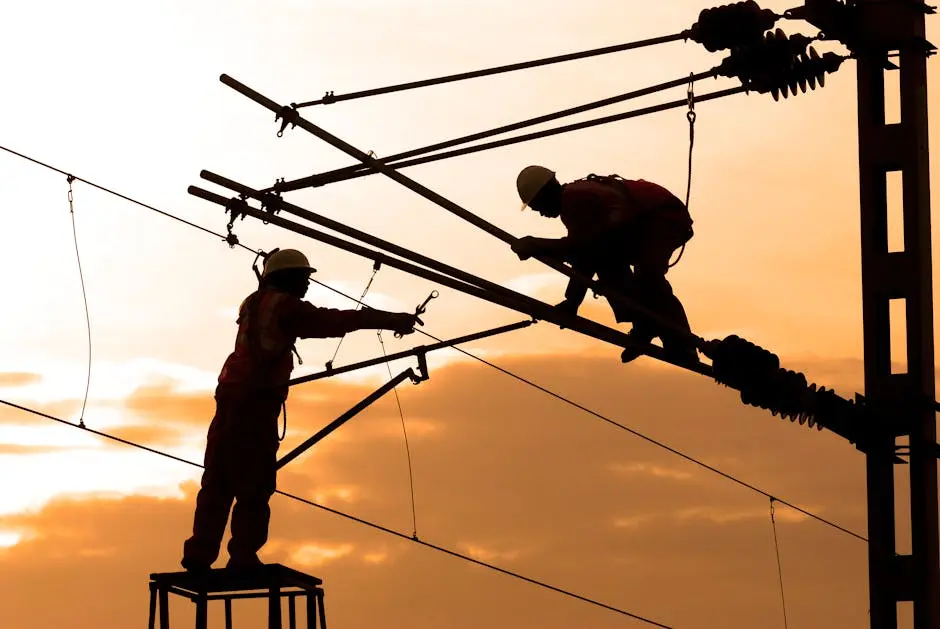Keeping your home’s electrical system in top shape is crucial for ensuring safety and efficiency. However, the world of wires and circuits can be daunting for many. In this blog, we’ll demystify some aspects of electrical maintenance, offering you straightforward tips from experienced electricians.
Understanding Your Home’s Electrical System
Before diving into maintenance tasks, it’s important to gain a basic understanding of your home’s electrical system. Knowing the different components such as circuit breakers, wiring, and outlets will empower you to make informed decisions.
Your electrical system begins at the main service panel, often called the breaker box, which is the heart of your home’s electrical grid. This panel controls the flow of electricity to various circuits in your home. Circuit breakers act as safety devices that interrupt electrical flow to prevent overload and potential fires. Familiarizing yourself with these elements is step one in performing any maintenance or troubleshooting work.
Don’t forget the role of outlets and switches. They’re often taken for granted, but they are critical in controlling and distributing electricity. Understand the difference between standard outlets and Ground Fault Circuit Interrupters (GFCIs) because each serves distinct safety functions in the system. All these elements work together to form a comprehensive electrical network that supports your daily activities.
Regularly Inspecting and Upgrading Wiring
Wiring degrades over time, posing safety risks. Professional electricians recommend regular inspections to identify wear and tear. Upgrading old wiring can prevent outages and enhance safety.
To start, practice visual inspections of visible wiring, looking for signs of fraying or wear. If your home is older, consider that it might contain outdated or aluminum wiring, which is more prone to fire risks. If you spot any issues during your inspections, or if your house still operates with knob and tube wiring, consult a professional for detailed assessment and replacement options. Modern wiring standards not only improve safety but can also accommodate newer technologies and appliances that require higher amperage.
Moreover, upgrading wiring is not just about safety, but also about efficiency. Up-to-date wiring can handle modern loads better, reducing power loss and increasing the efficiency of energy use in your home. This can translate to tangible savings on your electricity bill over time. Enhancing your system through regular upgrades isn’t merely a response to potential problems—it’s a proactive approach.
Protecting Your System with Surge Protectors
Power surges can cause significant damage to electrical appliances. Installing whole-house surge protectors is a smart way to protect your investments from unexpected voltage spikes.
A surge protector acts as a safeguard between your house and external power surges that can occur due to storms, faulty wiring, or issues from the utility company. By redirecting or even blocking excess voltage, these devices can prevent costly damage to your electronics and appliances. Whole-house surge protectors connect directly to your electrical panel, offering a comprehensive defense line against various surge sources.
Still, even with a whole-house protector, individual plug-in devices add an extra layer of protection, especially for sensitive electronics like computers and home theater systems. Combining these two strategies ensures that your entire system is well-shielded against unpredictable electrical threats, safeguarding not just devices but also prolonging their lifespan.
The Importance of Ground Fault Circuit Interrupters (GFCIs)
GFCIs are designed to prevent electrical shocks in wet areas, like kitchens and bathrooms. Learn why these are essential and how to test them periodically to ensure your safety.
These crucial devices react within milliseconds to prevent electrical shock by cutting off power the moment a fault is detected. In rooms like the kitchen or bathroom, where water and electricity coexist, GFCIs are not just recommended but required by the National Electrical Code. Without them, even a minor short circuit could lead to serious injury or damage.
Testing GFCIs is simple and should be part of your regular maintenance routine. Just press the ‘test’ button on the outlet, ensuring the power cuts off, then press ‘reset’ to restore power. If the GFCI doesn’t respond, it might be time for a replacement. Regular testing ensures these devices can function properly when you need them most.
When to Call a Professional Electrician
While DIY projects can be fulfilling, certain electrical tasks should be left to professionals. Understanding when to call an expert can prevent accidents and ensure long-term safety.
Complex issues such as panel upgrades, complete circuit rewiring, and any work involving mains electricity should be handled by skilled electricians. These tasks not only require specialized tools but also an in-depth understanding of safety protocols and electrical codes. Missteps in these areas could not only be costly but dangerous.
When you’re updating fixtures or adding outlets, consult with a professional to ensure compatibility with your current system. Not only will this keep you safe, but it also ensures efficiency and compliance with local building codes. Knowing the limits of DIY can protect both you and your home’s inhabitants from potential safety hazards.
Ensuring Safety Through Knowledge and Professional Assistance
By following these expert tips, you can maintain a safe and efficient electrical system in your home. Remember, when in doubt, it’s always best to consult a professional. Your safety and peace of mind are worth it.










